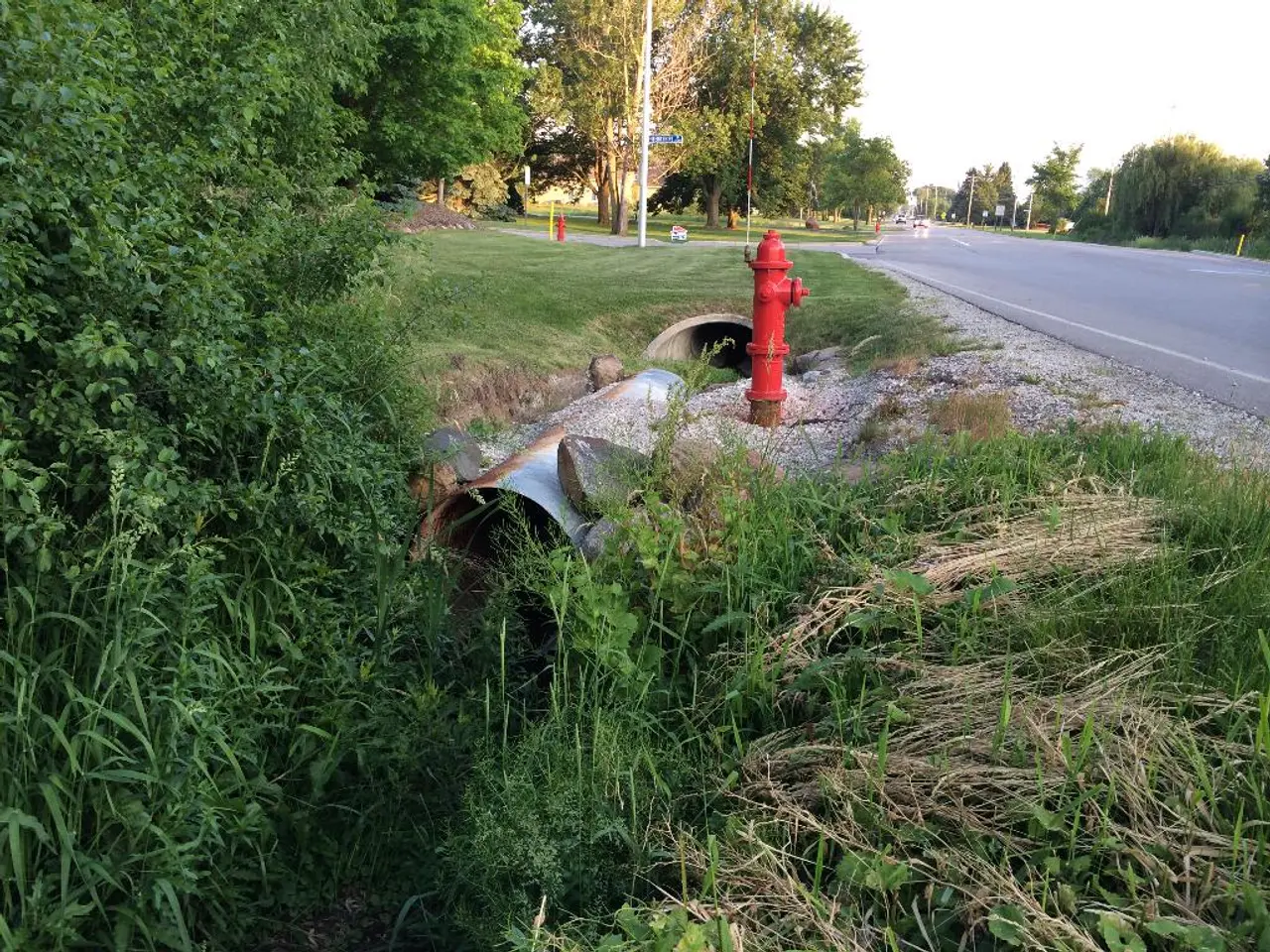Hydrangeas flourishing in shaded settings? Essential guidance for thriving north-facing gardens.
Hydrangeas, popular for their beautiful blooms, are often referred to as plants for shade. These flowering plants prefer partial shade, making them an excellent addition to shady corners and spaces in your garden.
One of the most popular varieties, Hydrangea macrophylla, thrives in dappled shade and is easy to grow. Another standout addition is Hydrangea arborescens 'Annabelle', which can grow to around 1-1.5 metres in full shade and is a great choice for drier patches of shade.
While most varieties of hydrangeas require part shade, it's important to note that some, like Hydrangea arborescens 'Annabelle' and 'Incrediball', can also be grown in deep shade. However, shaded areas under trees and next to structures like garden walls or fences are often dry and not suitable for most hydrangeas.
Some direct sun is tolerated in a UK climate, but light shade, shielded from the harsh midday sun, is best for hydrangeas. For instance, Hydrangea arborescens 'Annabelle' starts out with lime green flowerheads that gradually turn white, making them a beautiful spectacle even in partial shade.
For a north-facing garden, Hydrangea anomala subsp. petiolaris is an excellent choice due to its ability to thrive in shady spots. This variety looks excellent by a shady wall and requires light pruning to remove dead or damaged stems.
Groundcover plants like tiarella or vinca minor can be grown around hydrangeas as a natural way to keep the roots cool. For those seeking a variety that can flourish in full sun or partial shade, Hydrangea Macrophylla Glam Rock is a great option, blooming from July to October.
Nick Hamilton, owner of Barnsdale Gardens, suggests that if you are worried that your soil might be too dry, a good thick mulch and occasional applications of water would do the trick. He also emphasises the importance of soil that is nutrient-rich and well-draining, and moist and cool conditions for hydrangeas.
Hydrangeas love soil that is nutrient-rich and well-draining, and they also prefer moist and cool conditions. Nick Hamilton's extensive gardening knowledge is the result of years of practical experience, trial and error, but also success with organic and peat-free methods.
In conclusion, with the right care and conditions, hydrangeas can thrive in various shady spots in your garden. Whether you opt for Hydrangea macrophylla, Hydrangea anomala subsp. petiolaris, or the hardy Hydrangea arborescens 'Annabelle', these plants will add a touch of beauty to your garden landscape, even in less sun-exposed areas.
Read also:
- Foot massages and their impact on diabetic nerve pain (neuropathy)
- Upcoming French Elections and Their Potential Impacts on Macron's Role
- Day 4 Highlights from the CES Automotive Sector: Mullen, Sony Honda Mobility, AFEELA, HCMF Group, STRADVISION, AUTOCRYPT, Mercedes-Benz, Luminar, Intel, Continental, Hyundai, VicOne, and BlackBerry Featured Prominently
- Struggles of the Underprivileged in Society




